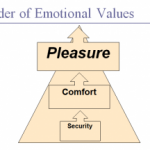 Maintaining a business blog is time-consuming. However, if you have clear objectives in mind, the effort very well could be worth your while. As you establish your blog, define your goals to determine whether to keep it alive. Below are five common uses for feeding regular content into a business blog. (photo courtesy digitalart)
Maintaining a business blog is time-consuming. However, if you have clear objectives in mind, the effort very well could be worth your while. As you establish your blog, define your goals to determine whether to keep it alive. Below are five common uses for feeding regular content into a business blog. (photo courtesy digitalart)
1. Raw Sales
For retailers and service providers, the most obvious reason to host a business blog is to peddle products or services. You want to show what you have to offer, and a blog is a great way to advertise deals to engaged customers who are clearly in the mood to buy and interested in your products (they are reading your blog, after all). If this is your intent, post product reviews, tell your readers about new products you’re expecting. Your blog works as an extension of your website, so provide more information than customers would receive from the product page. Let the reader feel as if he or she is getting the inside scoop.
2. Company and Industry News
Businesses of all types use their blogs to keep customers and clients in the know. If you’re hosting a company blog for communication purposes, include posts about company and industry news. These posts are especially useful for businesses catering to a tight niche. They also keep customers returning to informational business sites. These efforts help to establish a lasting relationship with customers who will return to a site if they know they can get up-to-date information. Read More→












